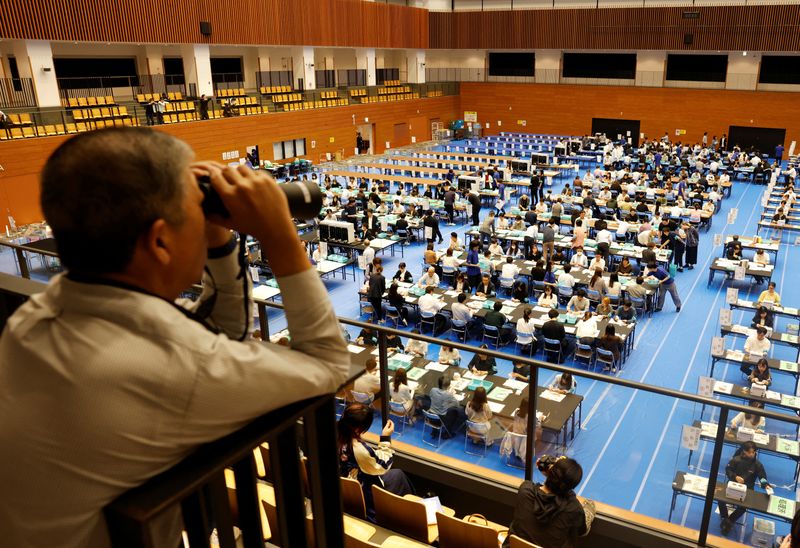TOKYO (Reuters) – The make-up of Japan’s future government was in flux on Monday after voters punished Prime Minister Shigeru Ishiba’s ruling coalition, leaving no party with a clear mandate to lead the world’s fourth-largest economy.
The uncertainty sent the yen currency to a three-month low as investors and analysts prepared for days, or possibly weeks, of political wrangling to form a government and potentially a change of leadership.
Ishiba’s Liberal Democratic Party and its junior coalition partner Komeito took 215 seats in the lower house of parliament, down from 279 seats, as voters punished the incumbents over a funding scandal and a cost-of-living crunch.
The biggest winner of the night, the main opposition Constitutional Democratic Party of Japan (CDPJ), had 148 seats, up from 98 previously, but also still well short of the 233 majority.
As mandated by the constitution, the parties now have 30 days to figure out a grouping that can govern, and there remains uncertainty over how long Ishiba – who became premier less than a month ago – can survive after the drubbing. Smaller parties also made gains and their role in negotiations could prove key.
“Whether or not Prime Minister Shigeru Ishiba resigns as LDP leader today, it seems unlikely that he will survive to lead a new government as prime minister … though it is possible he could stay on as caretaker,” said Tobias Harris, founder of Japan Foresight, a political risk advisory firm.
CDPJ leader Yoshihiko Noda has said he would work with other parties to try and oust the incumbents, though analysts see this as a more remote possibility.

The political instability comes as the country faces economic headwinds and a tense security situation in East Asia fuelled by an increasingly assertive China and nuclear-armed North Korea.
It also comes just over a week before voters in the United States – Japan’s closest ally – head to the polls in another unpredictable election.






